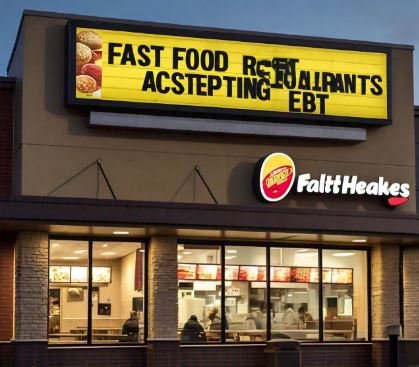In recent years, more people have been wondering, “Are there fast food restaurants accepting EBT?” With the rise in popularity of the Supplemental Nutrition Assistance Program (SNAP), which provides benefits to help low-income individuals purchase food, the idea of using EBT for fast food has sparked both excitement and concern. While the concept of using EBT at fast food restaurants offers many benefits, there are also significant limitations that make the experience less than ideal for some recipients. This article explores whether fast food restaurants accepting EBT provide easy access to affordable meals or whether the limitations outweigh the convenience.
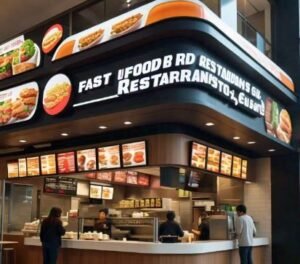
What is EBT and How Does it Work?
Before diving into the specifics of fast food restaurants accepting EBT, it’s essential to understand what EBT is and how it works. EBT, or Electronic Benefit Transfer, is the method by which SNAP benefits are distributed. Instead of receiving paper vouchers or food stamps, recipients get an EBT card, which functions like a debit card. The card is loaded with monthly benefits that can be used at authorized retailers to purchase eligible food items.
Traditionally, EBT benefits could be used only in grocery stores, farmers markets, and similar locations. However, in certain states, some fast food restaurants are authorized to accept EBT as part of the Restaurant Meals Program (RMP), aimed at helping elderly, disabled, or homeless individuals access prepared meals. The question remains, though, whether fast food restaurants accepting EBT offer enough benefits to justify the program or whether these options create more frustration than convenience.
The Benefits of Fast Food Restaurants Accepting EBT
1. Convenient Access to Meals
One of the main advantages of fast food restaurants accepting EBT is the convenience it provides for recipients, especially those who are elderly, disabled, or experiencing homelessness. For these groups, preparing a meal at home may not be a viable option due to mobility issues, limited cooking facilities, or lack of a home environment to prepare food. Having access to fast food restaurants accepting EBT gives these individuals the ability to purchase ready-to-eat meals without the need for extensive cooking.
2. A Broader Selection of Food
The Restaurant Meals Program allows recipients to use their EBT cards at authorized fast food restaurants that participate in the program. This can help provide a wider range of food choices beyond what might be available in a grocery store. In many cases, fast food restaurants accepting EBT can offer hot meals that might be more appealing than the canned or boxed foods often purchased with traditional SNAP benefits.
For those in need of quick and nutritious meals, fast food restaurants accepting EBT can offer an option that is both affordable and accessible.
3. Support for Vulnerable Populations
For the elderly, homeless, and disabled populations who may struggle to cook or store food, fast food restaurants accepting EBT can be a lifeline. This program provides a much-needed opportunity for these individuals to access nutritious, hot meals without the need for extensive cooking or transportation to a traditional grocery store. In many cases, the ability to use EBT at fast food restaurants accepting EBT can greatly improve the quality of life for vulnerable populations.
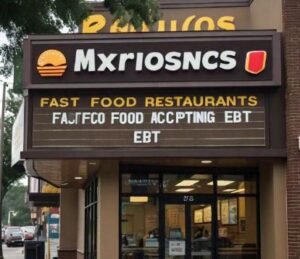
The Limitations of Fast Food Restaurants Accepting EBT
1. Limited Availability of Participating Restaurants
One of the most significant drawbacks of fast food restaurants accepting EBT is that only a small number of restaurants participate in the program. The Restaurant Meals Program is not available nationwide and is limited to certain states and counties. Even within those areas, only a select number of fast-food restaurants are authorized to accept EBT cards. This means that for many SNAP recipients, the idea of fast food restaurants accepting EBT remains a theoretical option rather than a practical reality.
As a result, many individuals may find themselves unable to access fast-food restaurants accepting EBT, especially if they live in areas where the program is not implemented. This can lead to frustration and a sense of limitation for those who would benefit from such a service.
2. Restrictions on What Can Be Purchased
Even when fast food restaurants accepting EBT are available, there are strict guidelines on what can be purchased. EBT benefits cannot be used to buy all menu items. For example, alcohol, tobacco, and some types of snacks may be excluded from eligibility, limiting the food choices available to those using their EBT cards at fast food restaurants. These restrictions can make the experience more complicated and less flexible than expected.
In addition, some states have additional rules regarding the kinds of fast food establishments that can participate in the program. For instance, fast food restaurants may need to provide meals that meet certain nutritional standards or have an established connection to providing meals to the elderly or disabled populations. As a result, fast food restaurants accepting EBT may offer a limited menu that does not include all items that recipients might wish to purchase.
3. Uncertainty and Lack of Awareness
Another drawback is the general lack of awareness surrounding fast food restaurants accepting EBT. Many recipients may not even be aware that they can use their EBT cards at certain fast food restaurants, or they may be uncertain about which locations are eligible. This lack of awareness can result in missed opportunities to access convenient, affordable meals.
Moreover, because the program is not universally available, those who may have had positive experiences with fast food restaurants accepting EBT in one state might not find the same options in another state or county. This creates a confusing and fragmented system for EBT cardholders, making it difficult to rely on fast food restaurants accepting EBT as a consistent or dependable solution.
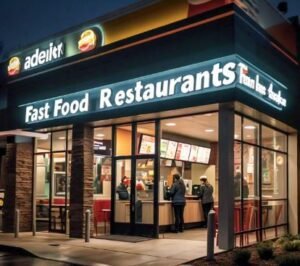
4. Additional Fees and Limitations
Some participating fast food restaurants that accept EBT may charge additional fees for using EBT to purchase meals. While the idea behind the Restaurant Meals Program is to provide accessible, nutritious meals to those in need, certain restaurants may take advantage of the program to charge higher prices for EBT purchases. This creates an additional financial burden for recipients and can make fast food restaurants accepting EBT less affordable than other options available.
How to Find Fast Food Restaurants Accepting EBT
If you’re interested in using your EBT card at fast food restaurants, it’s important to know where these restaurants are located. Here are a few ways to find fast-food restaurants that accept EBT:
- Check Local Listings: Many states and local municipalities provide online directories or resources listing fast food restaurants participating in the Restaurant Meals Program. A quick online search or phone call to local SNAP offices can provide useful information.
- Look for Restaurant Meals Program Signage: In some states, fast food restaurants participating in the program will display signs or labels indicating that they accept EBT. This can help recipients easily identify participating locations.
- Ask Your Local SNAP Office: Local government offices that manage SNAP benefits often have up-to-date information about where you can use your EBT card at fast food establishments. Reach out to your local office to inquire about fast food restaurants accepting EBT.
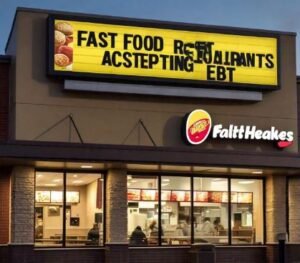
Conclusion
The idea of fast food restaurants accepting EBT offers significant benefits in terms of convenience and access to meals for vulnerable populations, including the elderly, disabled, and homeless individuals. However, these benefits are often limited by factors such as the availability of participating restaurants, restrictions on menu items, and lack of awareness among recipients. For many, the concept of using EBT at fast food restaurants may seem like an attractive option, but the limitations often make it a frustrating experience.
Ultimately, fast food restaurants accepting EBT can provide easy access to meals for some, but the frustration of limited options, restrictions, and unclear availability means it may not always be the solution it appears to be. As with many government assistance programs, ensuring that fast food restaurants accepting EBT works as intended requires both increased awareness and broader participation to make it a reliable resource for those in need.

